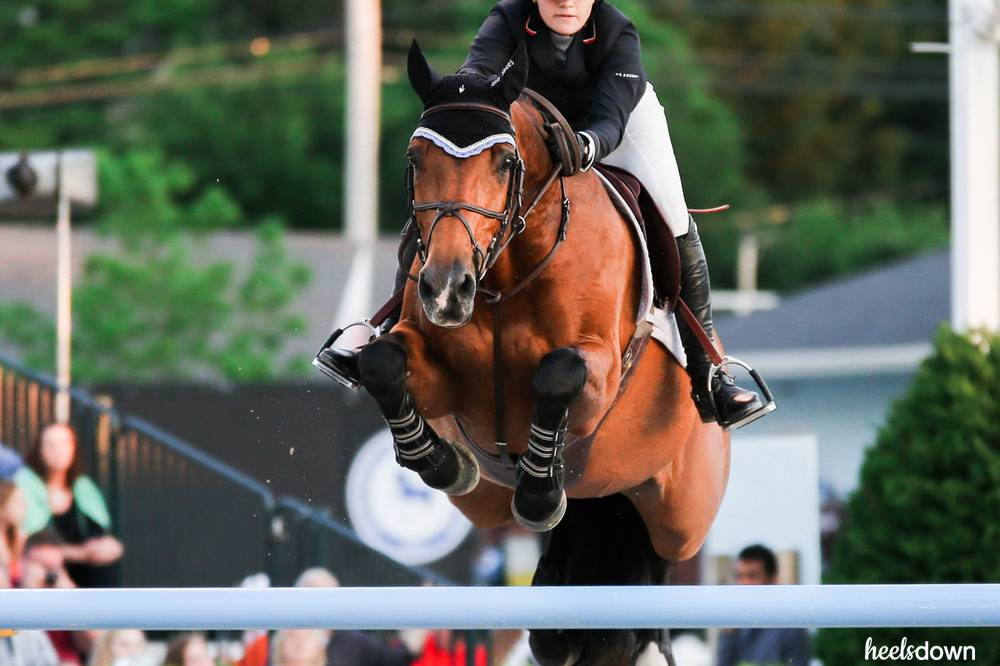How To Handle Pressure Before You Enter The Ring

The judge rings the bell and the countdown begins. You’ve got 30 seconds to get yourself together and flaunt it down centerline.
It’s normal to freeze up in that moment. Maybe you suck in a breath and try to rattle through the next 16 movements of your test in sequence, and your mind goes blank. Maybe you fuss with your hands some more in a shallow attempt to get a better, more round horse on the bit.
It might not be pretty, but it’s normal. We all feel that pressure in a competitive environment. How we handle that pressure though, is where we differ, said Dr. Gabby Ledger, a physician in Ontario, Canada, who recently spoke on the topic on the Heels Down Happy Hour podcast.
Listen to Heels Down Happy Hour Podcast 66: Pet Peeves & How To Handle Pressure
“It’s a competitive sport. You need some pressure, but not so much or too little that you struggle to manage it and fall apart. There’s a sweet spot in the middle,” she said.
It helps to remember that there are a lot of factors outside of a rider’s control that puts pressure on them. Those are the factors that create the emotional response of excitement, fear, or anxiety.
“You can’t control this. But you can learn to fine tune how to respond to those factors,” Dr. Ledger explained. “That can make all the difference – that the pressure is within a tolerable and beneficial range rather than so much that it’s impairing.”
Everyone experiences different amounts of pressure, she said.
“Is the amount of pressure you feel creating dysfunction? Or the inability to do your job in your role as an equestrian athlete? Or are you trashing relationships all around you because you can’t handle the pressure? Then it’s too much, for sure,” she described.
Know Yourself
The best way to manage how you react to pressure is to know yourself, Dr. Ledger explained.
“Not all of us are born with this insight into our personalities, our strengths and weaknesses and our patterns,” she said. “The first step for anyone trying to address a pressure problem is to find out where you are succumbing to pressure or where you are in control of the pressure but are using it in a negative way against yourself.”
She suggests talking to your coach or trainer about it. They can help you identify patterns that maybe you don’t even realize.

“There are infinite number of things to fine tune once you’ve figured out where it’s coming from and what you’re doing to make it better or worse.”
There are some people who thrive in high-stakes situations. But that doesn’t necessarily make them more successful than the competitor whose nerves are at an all-time high right before they ride. Olympian eventer, Kim Severson may vomit on the morning of cross-country day, and Olympian Boyd Martin might not miss a moment of sleep the night before.
“You can’t tell who is more successful,” Dr. Ledger said. “You have to know what’s normal for you and bring out the best in yourself.”
Sensation Seekers
There are some people who are addicted to this feeling of pressure, Dr. Ledger said. It’s the adrenaline rush of it that gets some people amped up.
“It’s that dopamine hit of accomplishment once you’ve crossed the finish line,” she said. “We call them ‘sensation seekers’ and there’s psychological research on these people. They are people who feel like their brains are under-stimulated and purposely seek out thrills and excitement.”
These people are also a little more vulnerable to addiction issues and disorders like ADHD, research shows.
“Look at people who are drawn to high-adrenaline sports like the X Games. These guys do well under that intense pressure and they seek it out,” Dr. Ledger said. “But for 80 percent of us, we feel that after we’ve crossed the finish line, that sense of achievement, that thrill that we feel for weeks after a great ride.”


